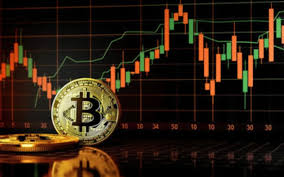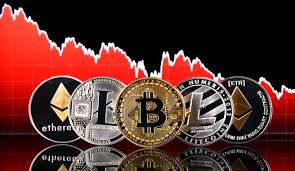18 May Unlocking Potential The Art of Crypto Trading High-Frequency

Understanding Crypto Trading High-Frequency
In the dynamic world of cryptocurrency, high-frequency trading (HFT) has emerged as a groundbreaking method utilized by sophisticated traders and hedge funds alike. The primary objective of high-frequency trading is to execute a large number of orders at extremely high speeds, often measured in milliseconds. This capability enables traders to exploit minor fluctuations in the market, capturing profits that may be unseen by traditional trading methods. For those eager to delve deeper into the nuances of this approach, a great resource is available at Crypto Trading High-Frequency https://www.carlagericke.com/tag/the-good-life/page/3/. In this article, we will dissect the key components of crypto high-frequency trading, explore its benefits and drawbacks, and consider the technology that powers this strategy.
The Mechanics of High-Frequency Trading
At its core, high-frequency trading relies on a combination of sophisticated algorithms, powerful computing technology, and low-latency connections to market exchanges. Unlike traditional trading, where decisions may be based on fundamental analysis or even a trader’s intuition, HFT uses quantitative analysis and mathematical models to make decisions. Traders deploy algorithms to analyze a multitude of market signals and execute trades automatically when specific criteria are met. The strategy can involve various methods, such as market making, arbitrage, and momentum trading.
Market Making in High-Frequency Trading
Market making is one of the most common strategies employed in HFT. In this scenario, a trader simultaneously places buy and sell orders for a particular cryptocurrency, providing liquidity to the market. This can benefit both the trader and the market, as the trader earns the spread—the difference between the buy and sell price. HFT market makers help to ensure that there is a more consistent and reliable trading volume, ultimately fostering market growth and stability.
Arbitrage Opportunities
Another prevalent strategy within HFT is arbitrage, where traders exploit price discrepancies between different exchanges. Given the volatile nature of cryptocurrencies, prices can vary significantly across platforms. High-frequency traders use algorithms to identify these discrepancies, allowing them to buy at a lower price on one exchange and sell at a higher price on another, generating risk-free profit. This swift execution is critical, as such opportunities may only exist for a fraction of a second before the market corrects itself.
The Role of Technology in HFT
The success of high-frequency trading is heavily reliant on advanced technology. To effectively compete, HFT firms invest heavily in infrastructure, including co-locating their servers in proximity to exchange data centers to minimize latency. They also utilize specialized hardware that can process massive amounts of data and execute trades faster than any human could. Furthermore, cloud computing and data analytics have become invaluable assets, allowing traders to refine their algorithms and strategies continuously.

Regulatory Challenges and Market Impact
While high-frequency trading can contribute to market efficiency, it also raises regulatory concerns. The speed and volume of trades can lead to volatility and flash crashes—instances where the market experiences a sudden and drastic drop in prices. Governments and financial authorities around the world have begun to scrutinize HFT practices to ensure that they do not manipulate the market or create unfair advantages. Compliance with regulations is a critical aspect for HFT firms to maintain legitimacy and avoid severe penalties.
Advantages of High-Frequency Trading
High-frequency trading offers several advantages, including:
- Speed: The ability to execute large volumes of trades in milliseconds allows traders to capitalize on fleeting opportunities that may not be visible to slower market participants.
- Liquidity: HFT creates additional liquidity in cryptocurrency markets, making it easier for traders to execute orders without significant price impacts.
- Reduced Transaction Costs: With the volume of trades executed, high-frequency traders can negotiate reduced fees with exchanges.
- Data-Driven Decisions: HFT leverages advanced algorithms to make decisions based on real-time data, minimizing emotional decision-making.
Challenges and Risks of High-Frequency Trading
Despite its allure, high-frequency trading is not without challenges and risks:
- Technical Failures: Over-reliance on technology means that any system malfunction can lead to significant financial losses or missed opportunities.
- Market Risks: HFT strategies are sensitive to market conditions, and unforeseen changes—or “black swan” events—can result in losses.
- Regulatory Scrutiny: Firms may face rigorous investigations and penalties if found engaging in manipulative trading practices.
- High Capital Requirements: Establishing a successful HFT firm requires extensive financial resources and infrastructure, making it challenging for individual traders to participate.
Conclusion: The Future of High-Frequency Trading
As the cryptocurrency market continues to evolve, so does the practice of high-frequency trading. With the integration of artificial intelligence, machine learning, and enhanced data analytics, traders are likely to become even more adept at executing complex strategies in rapid timeframes. While it is crucial for investors to remain informed and cautious, embracing the opportunities presented by HFT can open up new avenues for profit in an increasingly competitive landscape.
In summary, high-frequency trading represents a compelling intersection of technology and finance, continually shaping the dialogue around market strategies. Despite its challenges, the rapid evolution of algorithms and trading technologies indicates that HFT is not merely a fleeting trend but an integral part of the future of cryptocurrency trading.

